Captain from Castile
7 /10 1 Votes
Initial DVD release May 1, 2007 Duration Language English | 7/10 IMDb Genre Adventure, Drama, History Country United States | |||||||||||||||||||||||||||||||||
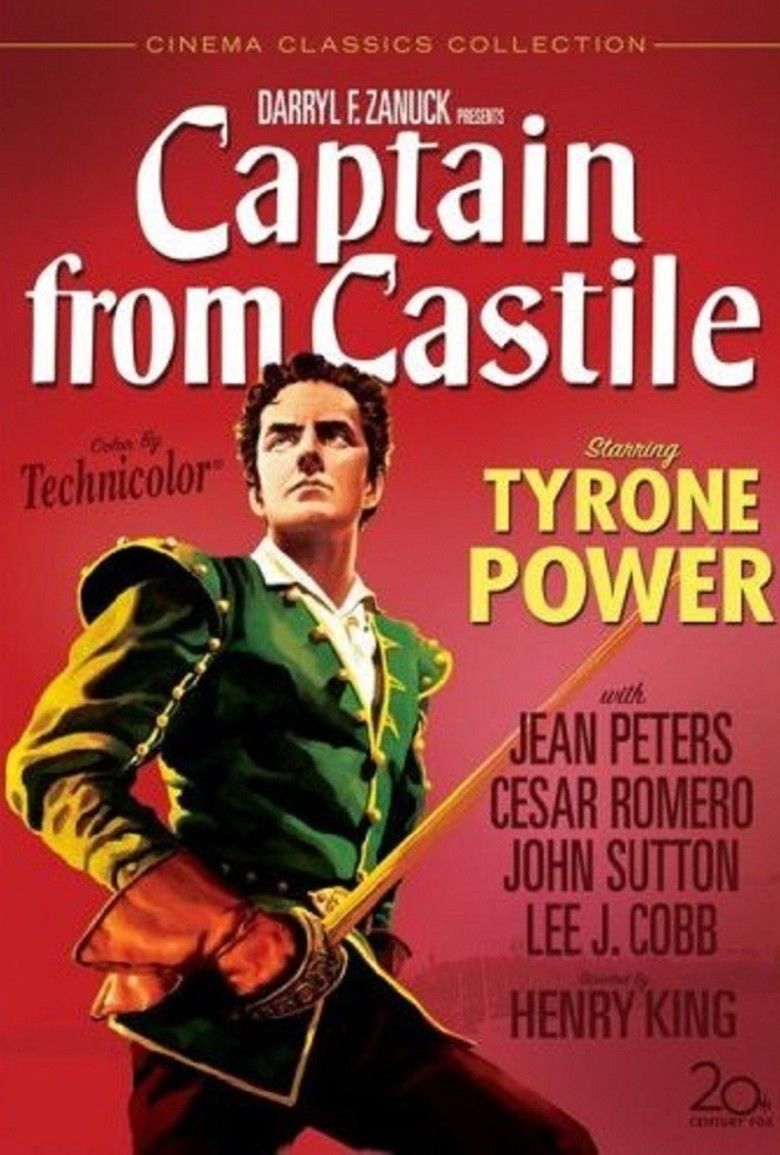 | ||||||||||||||||||||||||||||||||||
Release date December 25, 1947 Cast (Pedro De Vargas), (Catana Perez), (Hernando Cortez), (Juan Garcia), (Don Francisco De Vargas), (Father Bartolome Romero) Similar movies The Last Samurai , Highlander , Conan the Destroyer , Yojimbo , Hellboy Animated: Sword of Storms , Knights of the Round Table Tagline Master of Women's Hearts . . . . . . . Conqueror of a New World. | ||||||||||||||||||||||||||||||||||
Captain from castile il capitano di castiglia 1947 trailer
Captain from Castile is a historical adventure film released by 20th Century Fox in 1947. Directed by Henry King, the Technicolor film starred Tyrone Power, Jean Peters, and Cesar Romero. Shot on location in Michoacán, Mexico, the film includes scenes of the Parícutin volcano, which was then erupting. Captain from Castile was the feature film debut of actress Jean Peters, who later married industrialist Howard Hughes, and of Mohawk actor Jay Silverheels, who later portrayed Tonto on the television series The Lone Ranger.
Contents
- Captain from castile il capitano di castiglia 1947 trailer
- Alfred newman conquest march captain from castile
- Plot
- Cast
- Casting
- Screenplay
- Locations
- Photography
- Music
- Reception
- Adaptations
- Captain from castile magic ring by alfred newman
- References
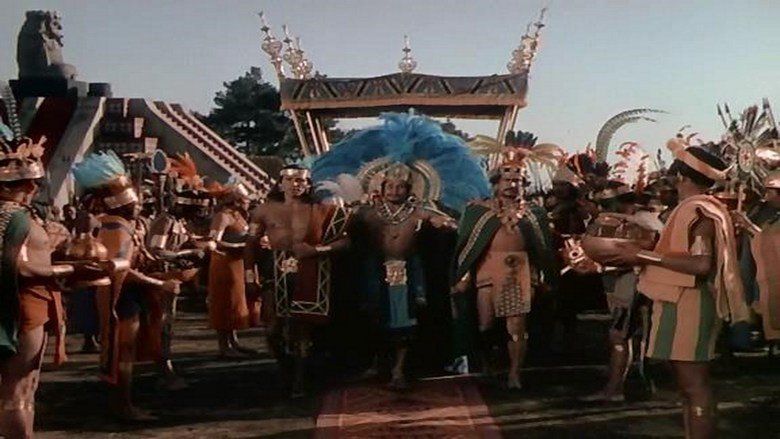
The film is an adaptation of the 1945 best-selling novel Captain from Castile by Samuel Shellabarger. The film's story covers the first half of the historical epic, describing the protagonist's persecution at the hands of the Spanish Inquisition and his escape to the New World to join Hernán Cortés in an expedition to conquer Mexico.
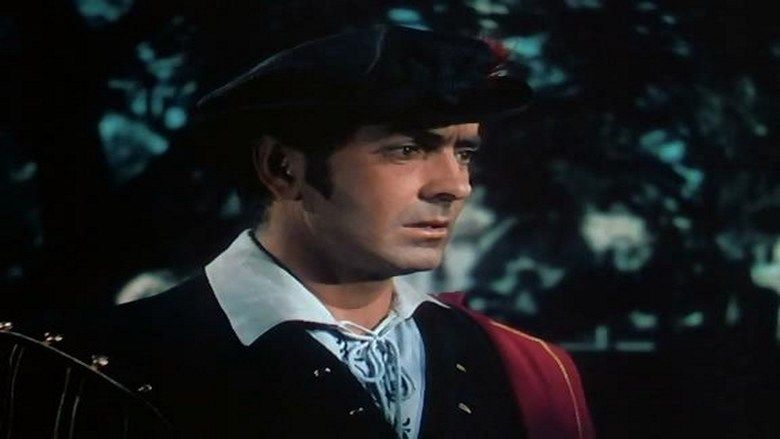
Alfred newman conquest march captain from castile
Plot
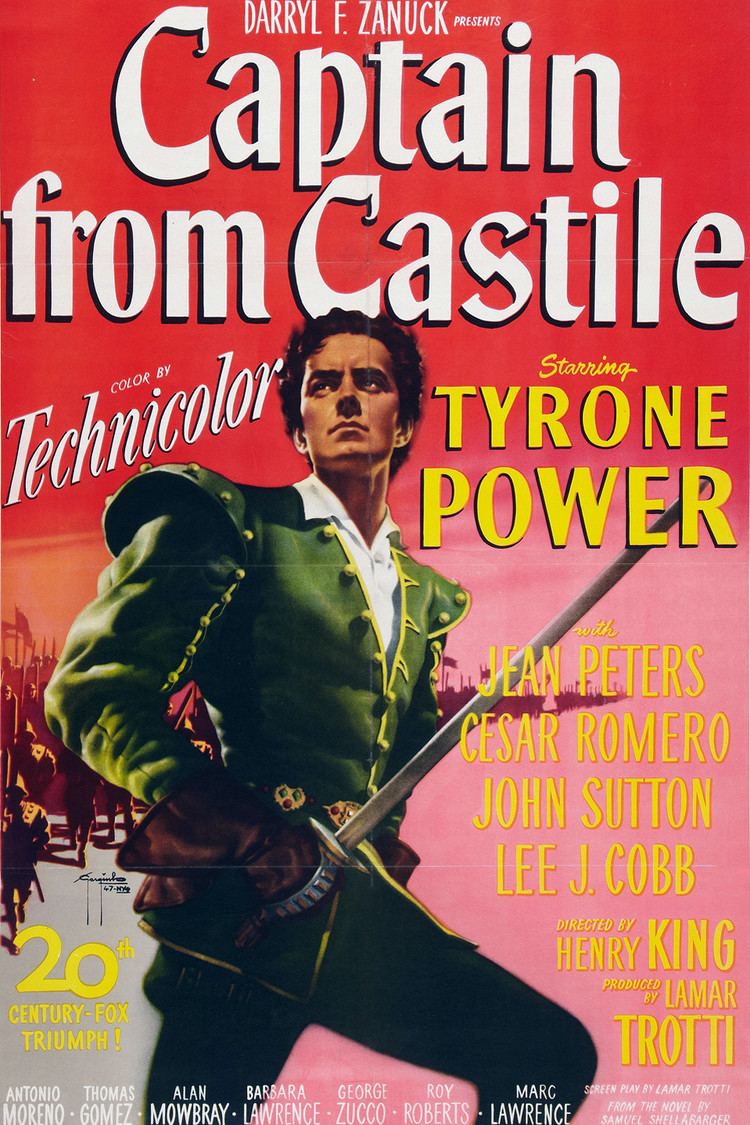
In the spring of 1518, near Jaén, Spain, Pedro de Vargas (Tyrone Power), a Castilian caballero, helps a runaway Aztec slave, Coatl (Jay Silverheels), escape his cruel master, Diego de Silva (John Sutton). De Silva is el supremo of the Santa Hermandad, charged with enforcing the Inquisition, and Pedro's rival for the affections of the beautiful Lady Luisa de Carvajal (Barbara Lawrence). Later, Pedro rescues barefoot barmaid Catana Pérez (Jean Peters) from de Silva's men. At the inn where Catana works, Pedro becomes acquainted with Juan García (Lee J. Cobb), an adventurer just returned from the New World to see his mother.
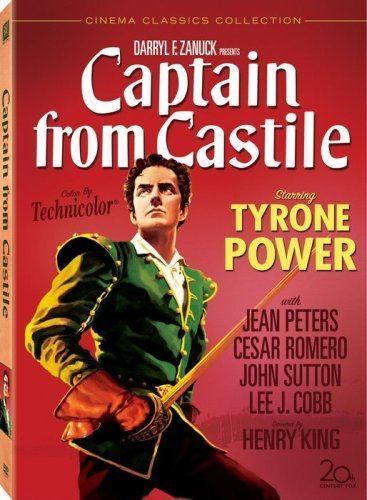
Suspecting Pedro of aiding Coatl, and aware that Pedro's influential father Don Francisco de Vargas (Antonio Moreno) opposes the abuses of the Santa Hermandad, de Silva imprisons Pedro and his family on the charge of heresy. Pedro's young sister dies under torture. Meanwhile, Juan becomes a prison guard to help his mother, also a prisoner. He kills her to spare her further torture. Juan frees Pedro's hands and gives him a sword.
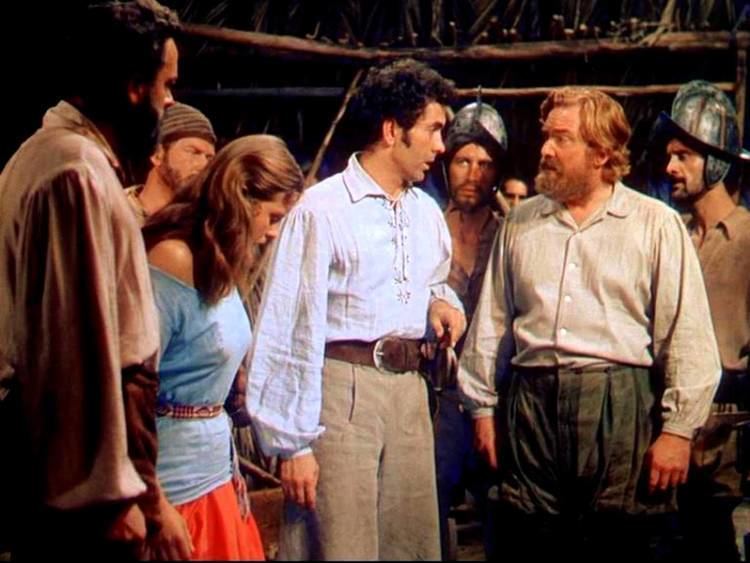
When de Silva enters Pedro's cell, Pedro disarms him in a sword fight, then forces him to renounce God before stabbing him. The trio flee with Pedro's parents. Forced by their pursuers to split up, instead of going to Italy to be reunited with his family, Pedro is persuaded by Juan and Catana to journey to Cuba to seek his fortune.
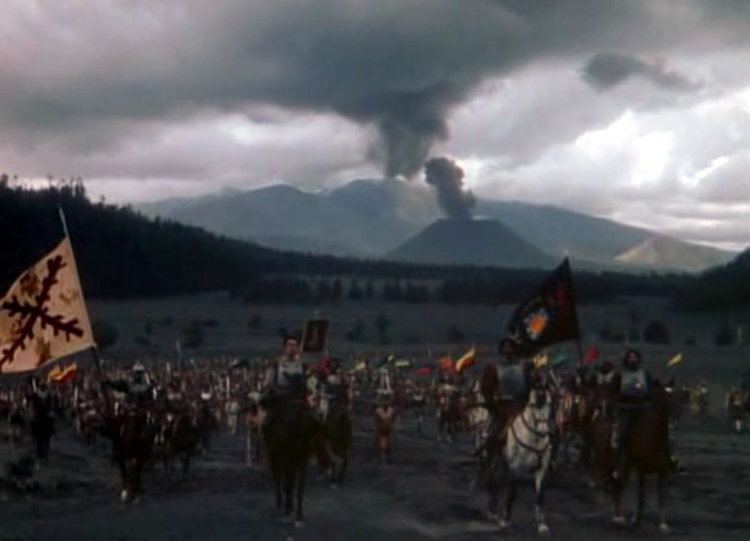
The three sign up with Hernán Cortes (Cesar Romero) on his expedition to Mexico. Pedro confides in Father Bartolomé (Thomas Gomez), the spiritual adviser to the expedition, about what occurred in Spain. The priest had already received an order to arrest him, but tears it up and gives Pedro a penance in praying for the soul of de Silva, neither aware that de Silva survived.
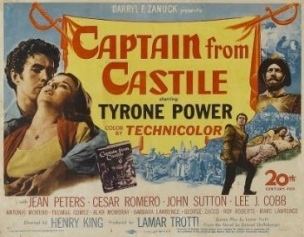
The expedition lands at Villa Rica in Mexico. Cortez is greeted by emissaries of Emperor Montezuma, along with a bribe to leave Mexico. Against the opposition of one of his captains, Cortez persuades his men to join him in his plan for conquest and riches.
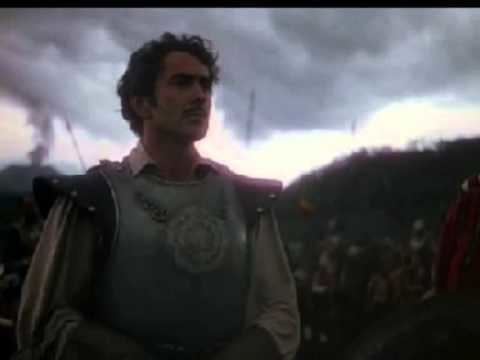
Catana seeks the aid of charlatan and doctor Botello (Alan Mowbray). Botello tries to dissuade her, but in the end gives her a ring, supposedly with the power to make Pedro fall in love with her, despite their vast difference in social status. When Pedro kisses her, she rejects him, believing he is under the ring's spell, but he convinces her otherwise and marries her that very night.
Cortez marches inland to Cempoala, where he receives a bribe of gems from another Aztec delegation. He places Pedro in charge of the detail guarding the gems in a teocalli. Pedro leaves his post, however, to calm down a drunk and menacing Juan. When he returns, the gems are gone. Cortez accuses Pedro of theft. When Pedro finds a hidden door into the teocalli, Cortez gives him 24 hours to redeem himself. Pedro tracks the thieves, the captains opposing Cortez, back to Villa Rica, where they have incited mutiny. With the aid of Corio (Marc Lawrence), a loyal crewman, he recovers the gems, although he is seriously wounded in the head by a crossbow bolt during their escape.
Cortez promotes Pedro to captain. Then, to remove the temptation of retreat, he orders their ships burned. They march on to Cholula, where they are met by another delegation, led by Montezuma's nephew, who threatens the expedition with annihilation unless they leave. When Cortez protests that he has no ships, the prince reveals that more have arrived. Cortez realizes that his rival, Cuban Governor Velázquez, has sent a force to usurp his command. Cortez takes half his men to attack Villa Rica, leaving Pedro in command of the rest.
Cortez returns victorious, bringing with him reinforcements and Diego de Silva, the King's emissary. De Silva is there to impose the Santa Hermandad on Mexico. Juan challenges de Silva to a duel, but is turned down. Father Bartolomé reminds Pedro of his vow, and Cortez holds him personally responsible for de Silva's safety. When de Silva is strangled that night, Pedro is sentenced to death for the murder. Just before the execution, Coatl confesses to Father Bartolomé that he killed de Silva. Before Pedro can be notified, Catana stabs him with a knife to spare him the degradation of being hanged. Fortunately, Pedro recovers. Cortez and his followers march on the Aztec island capital.
Cast
Casting
Twentieth Century-Fox director-writer-producer Joseph L. Mankiewicz, consulting with executive producer Darryl F. Zanuck on the making of Captain from Castille, recommended a reunion of Tyrone Power and Linda Darnell for the lead roles of Pedro and Catana. Power returned from service as a Marine Corps aviator during World War II and was available. Darnell was given the role of Catana, but appeared in two other projects while preparation for production was being completed. In the meantime Zanuck began filming of Forever Amber with the inexperienced Peggy Cummins in the title role, investing $1 million in the project before realizing it had become a disaster. Darnell was reassigned to save the project by replacing Cummins, and the role of Catana went to the then unknown Jean Peters.
Other actors recommended by Mankiewicz but not cast were Fredric March as Cortez, José Ferrer as Coatl, and Alan Reed or William Bendix to play Juan García.
The film made extensive use of Mexican inhabitants as extras. More than 19,500 took part in various scenes, with approximately 4,500 used in the final sequence filmed in front of Parícutin's smoking cinder cone.
Screenplay
The screenplay was adapted from Shellabarger's novel, as yet unpublished but serialized in Cosmopolitan, after Fox chief Zanuck purchased the rights in December 1944 for $100,000. In February 1945, studio contract writer John Tucker Battle produced an outline, then completed a first draft script with Samuel Engel in May. Zanuck consulted Joseph L. Mankiewicz about concepts for the film. Mankiewicz wrote back to Zanuck in July that the historical background of Cortez' conquest of Mexico had to be both accurate and unoffending to many groups of people. Mankiewicz also warned that the story would be tremendously expensive to film: "To do this picture ambitiously will cost a great deal of money. It will require Technicolor, a huge cast, great numbers of people, elaborate sets, costumes, props, locations etc. The script will take a long time to write—thorough research will be necessary."
The original scripts and storyline included a scene involving one of the novel's major characters and villains, the Dominican fray/Inquisitor Ignacio de Lora, to be played by British character actor John Burton. De Lora's character conducted the "examination" of the de Vargas family, tortured Juan Garcia's mother, and dispatched the order for Pedro's arrest to Cuba. Citing a December 15, 1947 New York Times article, one source attributes the excision of the scene to censorship by the Rev. John J. Devlin, a representative of the National Legion of Decency and advisor to the Motion Picture Association of America, on the basis that the depiction of the Spanish Inquisition was unacceptable to the Catholic Church. After revision of the script "toned down" depictions of the Inquisition, changing its name from the Santa Casa (The Holy Office) to the Santa Hermandad, eliminating the auto de fe prominent in the book, and making the lay character of de Silva the chief Inquisitor, the script was permissible to Devlin.
Keeping the film at an acceptable length required moving events that took place in the book's second half, primarily the return of Coatl and demise of de Silva, forward to what became the film's finale. Followers of the novel have criticized the failure to include the second half, which follows Pedro's development from a callow youth of 19 to a mature gentleman and features the expedition's battles with the Aztecs, Pedro's capture during the Noche Triste, his return to Spain and subsequent intrigue at the court of Charles V. However, like the film adaptation of Northwest Passage, the film's length and severe costs limited inclusion to those aspects most desired by the producers. The script for similar reasons made minor alterations to relationships in the novel, eliminating Pedro's prior dalliances with Catana, helping Juan against the Inquisition before being persecuted, and combining the characters Humpback Nojara, surgeon Antonio Escobar, and Botello the Astrologer into a single person, "Professor Botello". Even so, the screenplay faithfully adapts the important plot elements and scenes from the novel.
Historically, the most barbaric atrocities of Cortez are not depicted in the script. In particular, the slaughter of thousands of Aztecs in Cholula as a warning to Montezuma is instead shown as a single cannon shot demolishing an idol. The first review of the film in the New York Times noted that while the novel seemed written with a Technicolor movie in mind, that the action, horror, and bloodshed of the book were not translated to the film.
The script, while employing Spanish terminology and names where appropriate, also uses an undisclosed indigenous dialect (likely Nahuatl) for dialogue involving the Aztecs, with the historical personage Doña Marina (portrayed by Mexican actress Estela Inda) providing the translation as she did in real life. Other historically accurate characters portrayed were the mutineers Juan Escudero (John Laurenz) and Diego Cermeño (Reed Hadley), and the loyal Captains Pedro de Alvarado (Roy Roberts) and Gonzalo de Sandoval (Harry Carter).
Locations
Location filming took place in three locations in Mexico, two in the Mexican state of Michoacán. Acapulco provided ocean and beach locations for scenes involving "Villa Rica" (Veracruz). In Michoacán, the hills around Morelia depicted the countryside of Castile for the first half of the film, while extensive shooting took place near Uruapan to depict the Mexican interior. There the volcano Parícutin, which had erupted in 1943 and was still active, was featured in the background of many shots of the Cholulu (Cholula) sequences. In 1519-1520, the volcano Popocatépetl, just to the west of Cholula, had also been active while the Cortez expedition was present. The film's final scene, involving the movement of the expedition and its thousands of Indian porters, was filmed on the edge of Parícutin's lava beds with the cinder cone prominently nearby in the shot. The presence of the volcano, however, also proved to be expensive to production, since its ash cloud often made lighting conditions inconducive to filming.
Filming began November 25, 1946, and was completed on April 4, 1947. The film company spent 83 days in Mexico before returning to Hollywood to complete 33 days of studio filming, at a then "extravagant" cost of $4.5 million.
Photography
In addition to the directors of photography credited onscreen, George E. Clarke and Arthur E. Arling, Clarke's protogé Joseph LaShelle also contributed to the filming of Captain from Castile. While LaShelle was noted for excellent black-and-white photography, particularly in film noir, he had little experience with Technicolor or location shooting. Clarke was competent at both. LaShelle's work in the film appears primarily in interior shots, notably in scenes at Pedro's home. Arling was mainly responsible for second unit filming under assistant director Robert D. Webb. On location, photography inside the temples proved difficult because of poor space for proper lighting and excessive heat that could degrade color film.
Music
The lively musical score was composed by Alfred Newman, Fox's longtime musical director, and was nominated for an Academy Award. Newman recorded excerpts from the musical score for 78 RPM records (reportedly at his own expense), and donated his royalties to the Damon Runyon Cancer Research Foundation. years after he re-recorded the score in stereo for Capitol Records. In 1973, Charles Gerhardt conducted a suite from the film for RCA Victor's tribute album to Newman, Captain from Castile; the quadraphonic recording was later reissued on CD.
Newman bestowed the rights to the film's spectacular march to the University of Southern California to use as theme music for the school's football team. Popularly known as "Conquest," the march is regularly performed by its marching band, the Spirit of Troy as a victory march. It is also the corps anthem of the Boston Crusaders Drum and Bugle Corps, which has performed the piece in their field show frequently in the past and continues to incorporate it occasionally in their field shows of the present.
Reception
Though popular, the film failed to recoup its (at the time) enormous cost.
In his introduction to the 2002 re-issue of the novel, Pulitzer Prize-winning critic Jonathan Yardley described the film as:
"a faithful adaptation that had all the necessary ingredients: an all-star cast, breathtaking settings and photography, a stirring score, and enough swashbuckling action to keep the Three Musketeers busy for years."
It was nominated for the American Film Institute's AFI's 100 Years of Film Scores.
Adaptations
A radio adaptation of Captain from Castile was aired on Lux Radio Theatre on February 7, 1949, with Cornel Wilde as Pedro and Jean Peters reprising her role. An adaptation starring Douglas Fairbanks, Jr. was broadcast on the Screen Directors' Playhouse on May 3, 1951.
Captain from castile magic ring by alfred newman
References
Captain from Castile WikipediaCaptain from Castile IMDb Captain from Castile themoviedb.org
